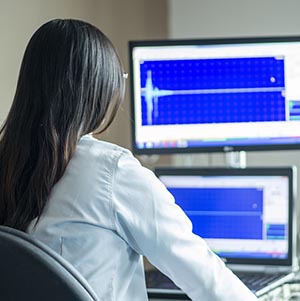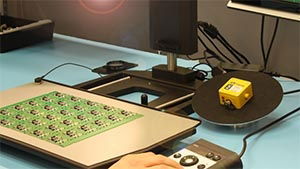Understanding Calibration in Environmental Monitoring Equipment
One of the most frequent sources of confusion with environmental monitors and data loggers is; what calibration is, and whether you actually need it? Whether you have a thermohygrometer, light meter, or a combination environmental monitoring instrument, you may have come across calibration as an option. Here's an explanation of what calibration is, why you might need it, and how it's done.

What is Calibration?
Calibration refers to the process of adjusting and verifying the accuracy and reliability of an instrument's measurements. It involves comparing the readings of the instrument to a known reference or standard to determine any deviations or errors. The instruments we sell will all have been factory calibrated when they were manufactured, so all instruments will have had some level of calibration when you receive them.
When calibration is offered as a separate service, it is for a further laboratory calibration. The instrument that is used as a reference will itself have been calibrated, usually in a UKAS (United Kingdom Accreditation Service) approved laboratory dependent upon the manufacturer. This calibration is certificated, and it is sometimes required for certain settings where the accuracy of readings is important. Calibration certificates do not have a period of validity, they are simply a statement of what the unit was reading when it was tested. This is why calibrated units are not available from stock, the service is performed in a laboratory environment on demand.

When is Calibration Not Required?
Sometimes it might not be necessary to have an instrument calibrated. For instance, if the data collected is viewed and analysed over short time periods, any drift of accuracy would not be perceptible e.g. logging light levels over the summer months only. The instrument would still demonstrate the trends or fluctuations in levels of UV (for instance), but the actual reading may not be critical. This is the same for all environmental monitoring. If you are only looking for trends and relative changes, and the actual accuracy of the reading is not significant, calibration becomes less important. The requirement for accuracy or certification can vary between settings, many instruments have never been calibrated past the initial factory calibration.
Why Might You Need a Calibration Certificate?
You might require a calibrated instrument for several reasons:
- Accuracy: Calibration ensures that the instrument provides accurate measurements. Over time, instruments may drift from their initial calibration due to factors such as wear and tear, environmental conditions, or component aging. Regular calibration helps to correct any inaccuracies and maintain reliable measurements. For instance, an instrument may have been in a warehouse for 6-12 months between manufacture and delivery to the end-user, which may lead to some minor shift in readings.
- Compliance: In certain industries or applications, there may be regulatory or quality standards that require the use of calibrated instruments. For example, in pharmaceutical manufacturing, calibration is essential to meet Good Manufacturing Practices (GMP) or ISO standards, ensuring the accuracy and traceability of measurements.
- Quality Control: Calibration is a crucial part of quality control processes. By regularly calibrating the instrument, a user can verify it is operating within acceptable tolerances. This helps in detecting any issues early on, allowing for adjustments or maintenance to be performed, thereby ensuring consistent and reliable data.

- Data Integrity: For scientific research, environmental monitoring, or any application where data accuracy is critical, calibration is necessary to maintain data integrity. Inaccurate measurements can lead to incorrect conclusions, flawed experiments, or unreliable analysis. Calibration helps to minimize measurement errors and uncertainties, enhancing the trustworthiness and validity of collected data.
- Traceability: Calibration provides traceability by establishing a documented and verifiable link between the measurement results of the instrument and recognized national or international measurement standards. This ensures that measurements can be compared and verified across different instruments or departments, allowing for consistency and compatibility in data exchange or collaborative efforts.
- Warranty and Liability: Some manufacturers provide warranties or guarantees that are contingent upon regular calibration of their instruments. Failing to calibrate the instrument as recommended may void the warranty or limit the manufacturer's liability for any issues or discrepancies.
As you can see, in some cases, even brand new and unused instruments can benefit from calibration or even require it depending upon the setting it is to be used in.
How Often Should We Calibrate an Instrument?
As discussed above, you may wish to have your instrument calibrated at purchase. It may also be necessary to continue to have the instrument calibrated during your ownership. The frequency of calibration depends on various factors such as the instrument's stability, usage environment, manufacturer's recommendations, industry standards, and specific requirements of the application. While there is no one-size-fits-all answer, here are some general guidelines:
- Manufacturer's Recommendations: The first and foremost consideration should be the manufacturer's guidelines. They typically provide recommendations on calibration intervals specific to their instrument. These guidelines are based on factors such as the instrument's stability, expected drift, and performance over time. For example, TinyTag recommends an annual calibration check.

- Industry Standards: Some industries or applications have specific standards or regulations that dictate calibration frequencies. In a museum environment, it may be critical that certain conditions are maintained for ISO purposes, and calibration frequency is dictated by internal policy.
- Environmental Conditions: If the unit is exposed to harsh or challenging environmental conditions, such as high humidity, extreme temperatures, or dusty environments, it may require more frequent calibration to ensure accuracy. These conditions can potentially impact the sensors and the instrument's performance and measurements.
- Accurate Measurements Critical: If data collected by an instrument is crucial for safety, critical processes, or scientific research, more frequent calibrations are advisable to minimize the risk of erroneous readings.
- Historical Performance: Analysing the historical performance and stability of the instrument can provide insights into its calibration needs. If there is a consistent pattern of drift or deviations, more frequent calibrations may be necessary.
As a general rule of thumb, annual calibration is often recommended for instruments that require a good level of accuracy. However, depending on the factors mentioned above, calibration intervals can range from six months to two years or more. It is best to consult the manufacturer's recommendations, industry standards, and consider the specific requirements and conditions of your application to determine the appropriate calibration frequency for your thermohygrometer. Some (most!) instruments are never calibrated, other than the original factory calibration, and can still offer insight into trends, even if the actual readings are not necessarily accurate.
How long does the calibration process take?
When you purchase calibration from us the whole process can take 2 to 3 weeks from receipt of order/your instrument, to delivery/return to you. For service calibration of used units, we return your unit to the manufacturer who performs the calibration and then returns to us for despatch back to you. While in the manufacturer's laboratory they can also fault check units and advise of any issues while they have the instrument (we'd let you know and give you the choice to repair or not!). When the calibrated units are returned some manufacturers will include a physical certificate of calibration, but some don't, if you need one please let us know and we can arrange it at no extra cost. There are some instruments that can be calibrated by you as a user, the collections trust have a short video on doing that here.
> | View Dataloggers here